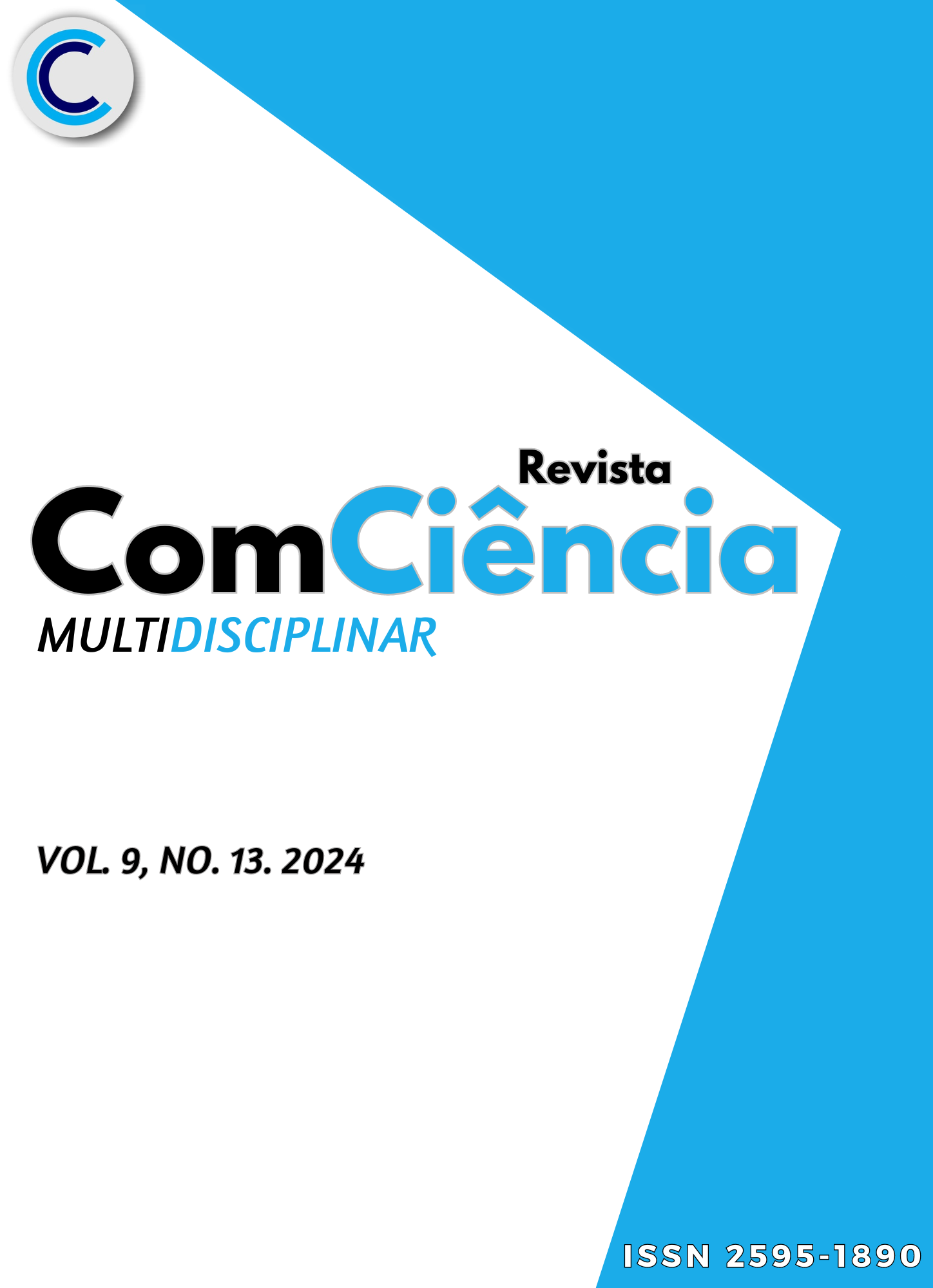IMPLANTAÇÃO DE VIVEIRO E PRODUÇÃO DE MUDAS NATIVAS DO CERRADO COMO ESTRATÉGIA DE EDUCAÇÃO AMBIENTAL
DOI:
https://doi.org/10.36112/issn2595-1890.v9.i13.e9132402Palavras-chave:
Educação Ambiental, Produção de Mudas, Sementes, Cerrado, ViveiroResumo
Educação Ambiental é um processo contínuo e permanente, que compreende de ações educativas para a formação de cidadãos relacionadas à preservação e conservação do meio ambiente. A temática ambiental se mostra cada vez mais relevante nos espaços escolares, um bom instrumento para desenvolver atividades educativas na escola é o viveiro, pois é capaz de desenvolver a conscientização teórica e prática sobre as questões ambientais. A partir disso, especula-se de que modo a produção de Mudas Nativas em um viveiro contribuirá na formação crítica-ambiental de estudantes de uma escola pública? Objetivou-se nesse trabalho construir, de modo participativo, um viveiro de mudas com produção de espécies nativas do Cerrado dentro de uma escola, visando promover o aprendizado e reflexões que tragam um olhar crítico sobre questões relevantes para a Educação Ambiental, além de promover e incentivar a arborização na comunidade. O projeto foi implantado numa escola na cidade de Luís Eduardo Magalhães, Bahia. O desenvolvimento da pesquisa-ação foi realizado com 32 estudantes e duas professoras de Ciências. Foi realizado a aplicação de questionários, implantação do viveiro e escrita de diário de bordo. Ao analisar a percepção ambiental dos estudantes nos questionários percebeu-se que o conhecimento existente não permitiu argumentação e análises críticas. Após a realização das atividades observou-se a ampliação do senso de reflexão dos alunos sobre questões ambientais. Ao todo foram produzidas 539 mudas nativas do Cerrado para plantio e distribuição na comunidade. As sementes utilizadas foram provenientes de matrizes sadias e vigorosas. As coletas foram realizadas pelas pesquisadoras em áreas rurais da mesma cidade de execução do projeto. As espécies escolhidas para o estudo foram: o jatobá, o tamboril, a lobeira, a sucupira, o cajuí, o buriti, o ipê amarelo e a mutamba. Sendo que, O ipê e o tamboril foram as espécies que obtiveram uma maior quantidade de mudas sadias, um total de 83 mudas cada. E o buriti foi a espécie que alcançou menor quantidade de mudas sadias, apenas 16. Concluiu-se que as atividades de Educação Ambiental foram de fundamental importância para o aprendizado dos estudantes participantes, pois através do conhecimento prático adquirido no viveiro se pode aprimorar o senso crítico dos participantes acerca de conteúdos relacionados as questões ambientais.
Downloads
Referências
ADRIANO, Jaime Rabelo et al. A construção de cidades saudáveis: uma estratégia viável para a melhoria da qualidade de vida? Ciência & Saúde Coletiva, v. 5, p. 53-62, 2000.
BRASIL. Política Nacional de Educação Ambiental. Lei 9795/99. Brasília, 1999.
BRASIL. Ministério da Educação. Vamos cuidar do Brasil: conceitos e práticas em educação ambiental na escola. Brasília: MEC, 2007.
BIONDI, D. Curso de arborização urbana. Curitiba: [sn], 2000.
BONONI, Vera Lúcia Ramos. Controle ambiental de áreas verdes. Curso de gestão ambiental. Coleção Ambiental. Manoele, Barueri, p. 213-255, 2004.
BOTELHO, S.A.; DAVIDE, A.C.; PRADO, N.J.S.; FONSECA, E.M.B. Implantação de Mata Ciliar. Belo Horizonte: CEMIG/UFLA/FAEPE, 1995. 36p.
BRANCALIONE, L. Educação ambiental: refletindo sobre aspectos históricos, legais e sua importância no contexto social. Revista de Educação do Ideau, v. 11, n. 23, 2016.
CAPOBIANCO, J. P. R. Mata Atlântica: conceito, abrangência e área original. In: A Mata Atlântica e Você: como preservar, recuperar e se beneficiar da mais ameaçada floresta brasileira. Brasília: APREMAVI, 2002.
DOS SANTOS NARCIZO, Kaliane Roberta. Uma análise sobre a importância de trabalhar educação ambiental nas escolas. REMEA-Revista Eletrônica do Mestrado em Educação Ambiental, v. 22, 2009.
FELFILI, J. M.; RIBEIRO, J. F.; FAGG, C. W.; MACHADO, J. W. B. Recuperação de Matas de Galeria. n. 21, p. 1-45. Dez. 2000.
IBGE – Instituto Brasileiro de Geografia e Estatística. Dados populacionais por municípios. Disponível em: < http://cod.ibge.gov.br/5PL>. Acesso em: 25 de outubro de 2018.
IBGE – Instituto Brasileiro de Geografia e Estatística. Dados populacionais por municípios. Disponível em:<http://cidades.ibge.gov.br/brasil/ba/luis-eduardo-magalhaes/panorama>. Acesso em: 09 de dezembro de 2023.
MARENGO, José A.; SOUZA JUNIOR, C. Mudanças Climáticas: impactos e cenários para a Amazônia. São Paulo: ALANA, 2018.
MEDEIROS, Aurélia Barbosa de et al. A Importância da educação ambiental na escola nas séries iniciais. Revista Faculdade Montes Belos, v. 4, n. 1, p. 1-17, 2011.
MONICO, Ilza Maria. Árvores e arborização urbana na cidade de Piracicaba/SP: um olhar sobre a questão à luz da educação ambiental. 2001. Tese de Doutorado. Universidade de São Paulo.
MÜLLER, K. S.; CAMARGO, I. P.; ALBUQUERQUE, M. C. F. Efeito de tratamentos pré-germinativos em sementes de buritizeiro, Mauritia vinifera. Informativo ABRATES, v.11, n.2, p. 269, 2001.
NOGUEIRA, A. C.; MEDEIROS, AC de S. Coleta de sementes florestais nativas. Embrapa Florestas-Circular Técnica (INFOTECA-E), 2007.
OLIVEIRA, M. C. de. Viveiro e produção de mudas de algumas espécies arbóreas nativas do Cerrado. Embrapa Cerrados, 76 p., 2005.
OLIVEIRA, F. R.; PEREIRA, E. R.; JÚNIOR, A. P. Horta escolar, educação ambiental e a interdisciplinaridade. Revista brasileira de Educação Ambiental, São Paulo, v. 13, n.2, p. 10-31, 2018.
PONTALTI, Edna Sueli. Projeto de educação ambiental: parque cinturão verde de Cianorte. APROMAC. Cianorte. Disponível em:< http://www. apromac. org. br/ea005. htm>. Acesso em, 01/11/2018, v.6, 2009.
RAMOS, José D. et al. Produção de mudas de plantas frutíferas por semente. Informe Agropecuário, v. 23, n. 216, p. 64-72, 2002.
VIRGENS, R. D. A. A Educação Ambiental no ambiente escolar. Brasília, 2011.
VOLPATO, G. Jogo e brinquedo: reflexões a partir da teoria crítica. Educação Social. Campinas, v. 23, n. 81, p. 217-226, 2002.
ZAIDAN, L. B. P.; BARBEDO, C. J.. 2004. Quebra de dormência em sementes. In: FERREIRA, A. G.; BORGUETTI, F. (orgs.). 2004. Germinação - Do básico ao aplicado. Porto Alegre: Artmed. 135-148 p.
Downloads
Publicado
Como Citar
Edição
Seção
Licença
Copyright (c) 2024 Revista ComCiência, uma Revista multidisciplinar

Este trabalho está licenciado sob uma licença Creative Commons Attribution-ShareAlike 4.0 International License.





